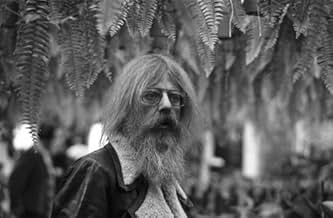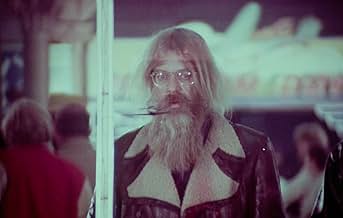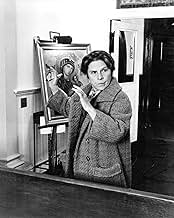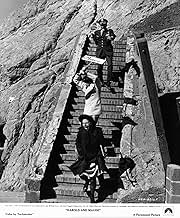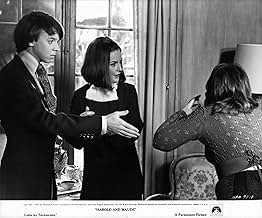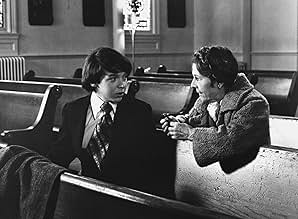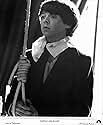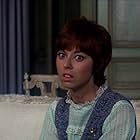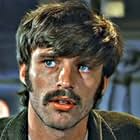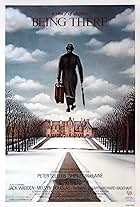Young, rich, and obsessed with death, Harold finds himself changed forever when he meets lively septuagenarian Maude at a funeral.Young, rich, and obsessed with death, Harold finds himself changed forever when he meets lively septuagenarian Maude at a funeral.Young, rich, and obsessed with death, Harold finds himself changed forever when he meets lively septuagenarian Maude at a funeral.
- Nominated for 1 BAFTA Award
- 3 wins & 3 nominations total
Tom Skerritt
- Motorcycle Officer
- (as M. Borman)
Ray K. Goman
- Police Officer
- (as Ray Goman)
Gordon De Vol
- Police Officer
- (as Gordon DeVol)
Sonia Sorel
- Head Nurse
- (as Sonia Sorrell)
- Director
- Writer
- All cast & crew
- Production, box office & more at IMDbPro
Featured reviews
Hal Ashby's "Harold and Maude" neatly fits into the category of cult classic, chiefly by virtue of its subject matter. In brief, the film concerns a morbid young man who befriends a free-spirited septuagenarian. Together they make about as unlikely a pair as you'll ever see in a romantic comedy.
The stars of the film, Bud Cort & Ruth Gordon, play their parts with relish. Furthermore, the two have excellent chemistry together. Besides the stars, Vivian Pickles, as Harold's overbearing mother, and Charles Tyner, as his uncle Victor, stand out in support.
Ashby's direction is well-handled and the film sports some nice visuals. However, the film's best element on the technical side is arguably the soundtrack. The songs of Cat Stevens are heard throughout and they truly capture and enhance the spirit of the film.
In the end, "Harold and Maude" is certainly a unique little film and one that seems way ahead of its time. It's the sort of quirky movie that would be right at home next to some of today's independent films. Given it's eccentricities, I'm unsurprised that it was a commercial flop at the time of its release but, thankfully, it has gained in stature over time.
The stars of the film, Bud Cort & Ruth Gordon, play their parts with relish. Furthermore, the two have excellent chemistry together. Besides the stars, Vivian Pickles, as Harold's overbearing mother, and Charles Tyner, as his uncle Victor, stand out in support.
Ashby's direction is well-handled and the film sports some nice visuals. However, the film's best element on the technical side is arguably the soundtrack. The songs of Cat Stevens are heard throughout and they truly capture and enhance the spirit of the film.
In the end, "Harold and Maude" is certainly a unique little film and one that seems way ahead of its time. It's the sort of quirky movie that would be right at home next to some of today's independent films. Given it's eccentricities, I'm unsurprised that it was a commercial flop at the time of its release but, thankfully, it has gained in stature over time.
I only saw this film quite recently but it hopped straight to my number one film of all time. It is beautiful. Bud Cort is charming as Harold and Ruth Gordon - dare I say cute? As Maude. If I look like her when I'm eighty I'll be out there nicking cars and fluttering my eyelashes at policemen too! Maude wrenches Harold free from his morbid and lonely existence to show him how lush and amazing the world can be and he emerges from his experiences a happy man. This is definitely one of the films that (along with say, Fight Club, American Beauty and The Rocky Horror Picture Show) show you can be who you want to be, and you needn't let anyone oppress you. It's brilliant. Everyone should know a Maude. It has inspired me to buy a banjo and play Cat Stevens songs.
'Harold & Maude' is one of those 'sleeper' films that just seems to resonate that bit more with every passing year. Harold, played by the criminally under-utilized Bud Cort, is the quintessential disaffected rich kid wanting to find some meaning in a vacuous life who hooks up with the devil-may-care Maude through their mutual love of attending funerals (Joyce's word 'fun-for-all' springs readily to mind in those scenes). There is plenty to love about this film, the slower pace and the lampooning of easy targets, the 'gung-ho' military uncle and the fetishist priest for example. Here is a film that really stands up well to repeated viewings.
I first came to Harold and Maude from a suggestion from an eccentric friend who I thought I would humor by tracking down a 34-year-old movie. What I found, however, was one of the most amazing yet understated movies about the joys of life that I have ever seen. There are many subtle lines that take an extra amount of time and thought with a little self-reflection that can shake the very belief system of the viewer. For example,
"Zoos are full, prisons are overflowing... oh my, how the world still dearly loves a cage."
and,
"Maude: I should like to change into a sunflower most of all. They're so tall and simple. What flower would you like to be?
Harold: I don't know. One of these, maybe.
Maude: Why do you say that?
Harold: Because they're all alike.
Maude: Oooh, but they're not. Look. See, some are smaller, some are fatter, some grow to the left, some to the right, some even have lost some petals; all kinds of observable differences. You see, Harold, I feel that much of the world's sorrow comes from people who are this, (pointing to an individual daisy) yet allow themselves be treated as that (pointing to an entire field of seemingly identical daisies)"
Harold and Maude is about a young person who is full of life and obsessed with death, and an elderly person who is nearing death but is obsessed with life. What is revealed with this strange juxtaposition is that we can only learn to live life to its fullest by following the lessons of the dying. The message that I have taken from Harold and Maude is to live like you were dying!
"Zoos are full, prisons are overflowing... oh my, how the world still dearly loves a cage."
and,
"Maude: I should like to change into a sunflower most of all. They're so tall and simple. What flower would you like to be?
Harold: I don't know. One of these, maybe.
Maude: Why do you say that?
Harold: Because they're all alike.
Maude: Oooh, but they're not. Look. See, some are smaller, some are fatter, some grow to the left, some to the right, some even have lost some petals; all kinds of observable differences. You see, Harold, I feel that much of the world's sorrow comes from people who are this, (pointing to an individual daisy) yet allow themselves be treated as that (pointing to an entire field of seemingly identical daisies)"
Harold and Maude is about a young person who is full of life and obsessed with death, and an elderly person who is nearing death but is obsessed with life. What is revealed with this strange juxtaposition is that we can only learn to live life to its fullest by following the lessons of the dying. The message that I have taken from Harold and Maude is to live like you were dying!
If so irreverent a story were to be told today, how would one react? As was probably the case when the film was released, people would probably find the theme edgy, if not inappropriate.
Such is the case with the cult film `Harold and Maude.' It openly explores themes of suicide, love, death and life with a fresh perspective.
The interesting part is how this film will likely find you. In most societies, an older man will likely fall for a woman years his junior. However, Harold (Bud Cort)-a shy teenager with an affinity for death-meets his 80-year-old true love Maude (Ruth Gordon), not at a dance or social event, but at funerals. The meeting almost seems reminiscent of Edward Norton's character's support group addiction in `Fight Club.'
Harold loves the attention he gets from staging fake suicides to frighten his obtuse and superficial haute-culture mother. In a reaction, she enlists him in a computer dating service in a vain matchmaking attempt to fix him up with Beetle-driving yuppies-to-be. The beauty is he frightens off all his prospective mates with cleverly staged fake suicides. At the same time, he meets Maude, a free-spirited senior who teaches him to appreciate life. After spending more time with her, he finds himself in love with her. However, a barrage of authority-i.e. priests, army-loving uncles and a psychiatrist-urge him not to follow through with his relationship.
`Harold and Maude' plays on '60s-esque themes of anti-establishment and open minds. Harold's militaristic uncle comes across as comical in his war-mongering vices-right down to his armless right sleeve that salutes when he pulls the string. Harold seems unhappy though he's surrounded by extravagance that rivals anything on MTV's `Cribs.' Not only that but his mother's lack of sense and indifference to her son mirrors her addiction to affluence. In addition to the swarm of brides-to-be, she tries to pacify him with material possessions-including a spanking-new Jaguar convertible, which he converts into a hearse.
Cat Stevens' open-air, acoustic-driven rock 'n' roll provides the soundtrack for the film. It gives the film a decent organic sound indicative of its demeanor.
This is a film that chases happiness wherever it can be found with a Woodstock-sense of responsibility. Maude's vices of vehicular larceny and bong smoking match Harold's love of fake hara-kiris and hearses. In a way, this movie comes across as a bit dated in that time has indeed erased the '60s anticipation of The Age of Aquarius and replaced it with `Fight Club' desperation.
However what the film lacks in reality, it makes up for in heart. This movie is not meant to be taken seriously; it's only to break down paradigms of societal thought.
Such is the case with the cult film `Harold and Maude.' It openly explores themes of suicide, love, death and life with a fresh perspective.
The interesting part is how this film will likely find you. In most societies, an older man will likely fall for a woman years his junior. However, Harold (Bud Cort)-a shy teenager with an affinity for death-meets his 80-year-old true love Maude (Ruth Gordon), not at a dance or social event, but at funerals. The meeting almost seems reminiscent of Edward Norton's character's support group addiction in `Fight Club.'
Harold loves the attention he gets from staging fake suicides to frighten his obtuse and superficial haute-culture mother. In a reaction, she enlists him in a computer dating service in a vain matchmaking attempt to fix him up with Beetle-driving yuppies-to-be. The beauty is he frightens off all his prospective mates with cleverly staged fake suicides. At the same time, he meets Maude, a free-spirited senior who teaches him to appreciate life. After spending more time with her, he finds himself in love with her. However, a barrage of authority-i.e. priests, army-loving uncles and a psychiatrist-urge him not to follow through with his relationship.
`Harold and Maude' plays on '60s-esque themes of anti-establishment and open minds. Harold's militaristic uncle comes across as comical in his war-mongering vices-right down to his armless right sleeve that salutes when he pulls the string. Harold seems unhappy though he's surrounded by extravagance that rivals anything on MTV's `Cribs.' Not only that but his mother's lack of sense and indifference to her son mirrors her addiction to affluence. In addition to the swarm of brides-to-be, she tries to pacify him with material possessions-including a spanking-new Jaguar convertible, which he converts into a hearse.
Cat Stevens' open-air, acoustic-driven rock 'n' roll provides the soundtrack for the film. It gives the film a decent organic sound indicative of its demeanor.
This is a film that chases happiness wherever it can be found with a Woodstock-sense of responsibility. Maude's vices of vehicular larceny and bong smoking match Harold's love of fake hara-kiris and hearses. In a way, this movie comes across as a bit dated in that time has indeed erased the '60s anticipation of The Age of Aquarius and replaced it with `Fight Club' desperation.
However what the film lacks in reality, it makes up for in heart. This movie is not meant to be taken seriously; it's only to break down paradigms of societal thought.
Storyline
Did you know
- GoofsWhen Maude pulls the banjo out of a cabinet, you see the reflection of crew and lights.
- ConnectionsEdited into The Kid Stays in the Picture (2002)
Details
- Release date
- Country of origin
- Language
- Also known as
- Enséñame a vivir
- Filming locations
- 10 Stacey Court, Hillsborough, California, USA(Chasen Family mansion)
- Production company
- See more company credits at IMDbPro
Box office
- Budget
- $1,200,000 (estimated)
- Gross worldwide
- $4,535
Contribute to this page
Suggest an edit or add missing content



![Harold and Maude: The Criterion Collection [Blu-Ray]](https://m.media-amazon.com/images/M/MV5BMTMyMzU1YjgtMDhkYS00NzlkLWFjNzgtMGQwNjEwMjdjYTAyXkEyXkFqcGdeQXVyNzU1NzE3NTg@._V1_QL75_UX500_CR0,47,500,281_.jpg)

